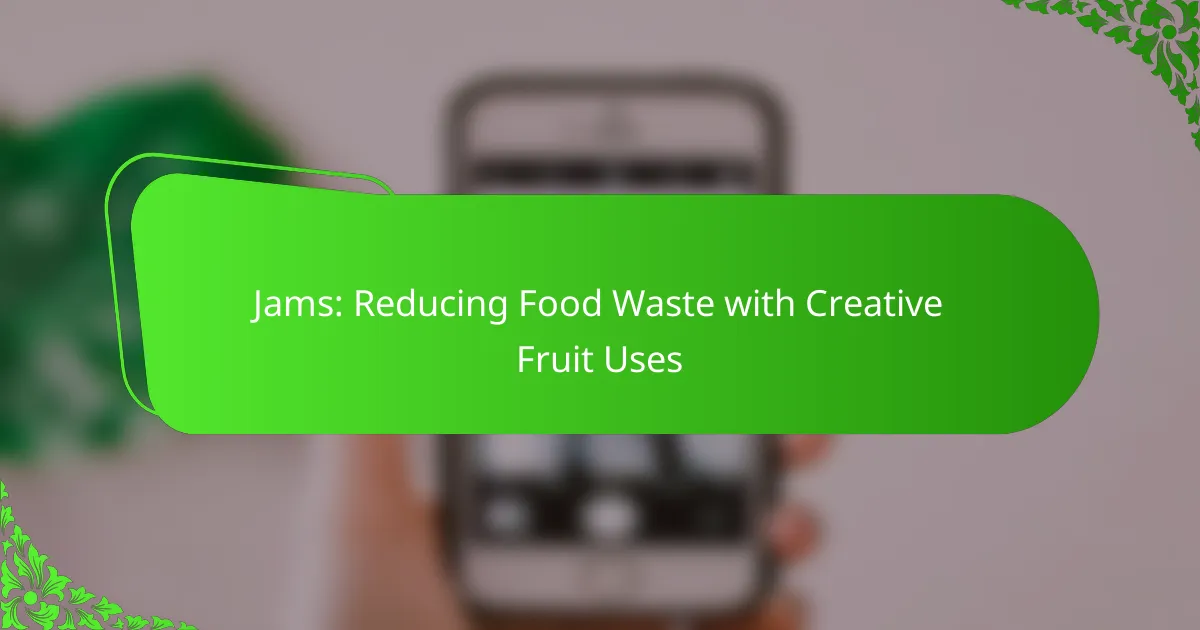The environmental impact of jam packaging is a crucial consideration for both producers and consumers, as it encompasses factors such as carbon footprint, waste generation, and resource consumption. By choosing eco-friendly packaging options, such as glass jars or innovative plant-based plastics, stakeholders can significantly reduce their ecological footprint while maintaining product quality. Embracing sustainable packaging not only benefits the planet but also enhances brand perception among environmentally conscious consumers.
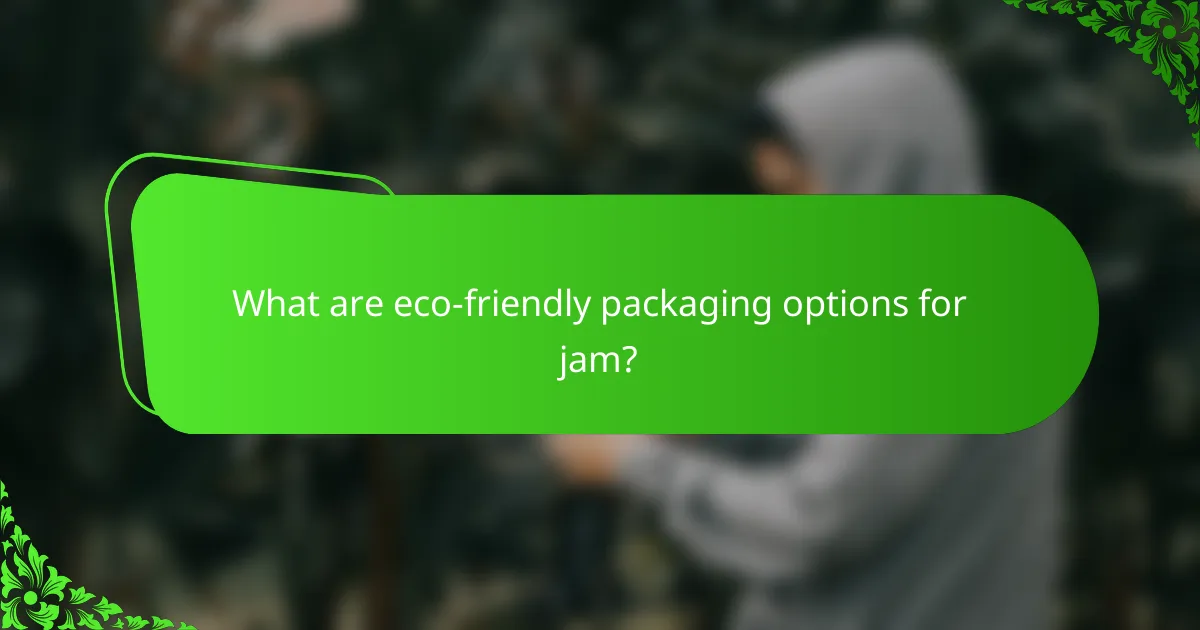
What are eco-friendly packaging options for jam?
Eco-friendly packaging options for jam include materials that minimize environmental impact while maintaining product quality. These options range from traditional glass jars to innovative plant-based plastics, each offering unique benefits and considerations.
Glass jars
Glass jars are a popular choice for jam packaging due to their recyclability and ability to preserve flavor. They are durable and can be reused multiple times, making them a sustainable option. However, the production of glass can be energy-intensive, so sourcing locally produced jars can help reduce carbon footprints.
Biodegradable containers
Biodegradable containers are designed to break down naturally over time, reducing landfill waste. Made from materials like cornstarch or sugarcane, these containers decompose in composting environments. It’s essential to check for certifications to ensure they meet compostability standards, as not all biodegradable options are created equal.
Recyclable materials
Using recyclable materials for jam packaging helps divert waste from landfills. Common recyclable options include certain plastics and paperboard. Always check local recycling guidelines, as the acceptance of materials can vary by region, affecting how effectively they are recycled.
Plant-based plastics
Plant-based plastics, derived from renewable resources like corn or sugarcane, offer a more sustainable alternative to traditional petroleum-based plastics. These materials can reduce reliance on fossil fuels and lower greenhouse gas emissions. However, they may not always be recyclable, so it’s vital to verify their disposal options.
Reusable packaging
Reusable packaging encourages consumers to return containers for refill or repurposing, significantly cutting down on waste. Options include glass jars that can be refilled at local markets or specialized containers designed for multiple uses. Establishing a return program can enhance customer loyalty while promoting sustainability.
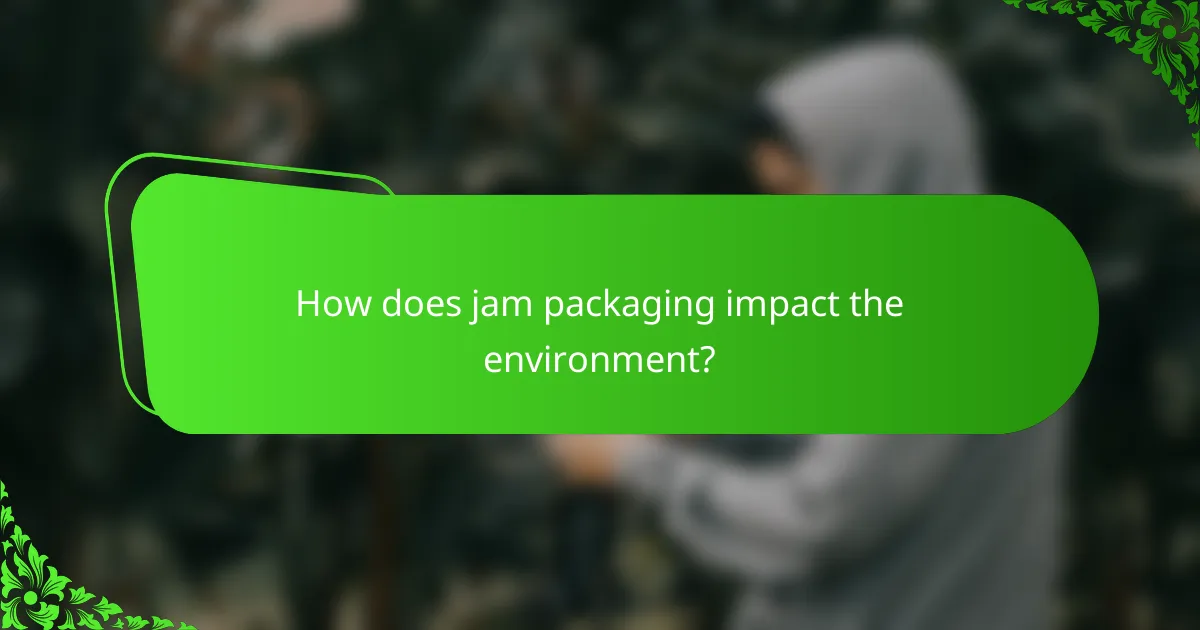
How does jam packaging impact the environment?
Jam packaging significantly affects the environment through its carbon footprint, waste generation, and resource consumption. Choosing eco-friendly packaging options can help mitigate these impacts and promote sustainability.
Carbon footprint of materials
The carbon footprint of jam packaging varies depending on the materials used. Glass jars, for instance, have a higher initial carbon footprint due to energy-intensive production processes, but they are recyclable and reusable, which can offset their impact over time.
In contrast, plastic packaging often has a lower initial carbon footprint but poses challenges in recycling and contributes to long-term environmental pollution. Opting for biodegradable or compostable materials can help reduce the overall carbon footprint associated with jam packaging.
Waste generation
Waste generation from jam packaging is a critical concern, particularly with single-use plastics. Many plastic containers end up in landfills or oceans, where they can take hundreds of years to decompose, harming wildlife and ecosystems.
To minimize waste, consumers can choose brands that use recyclable or reusable packaging. Participating in local recycling programs and supporting companies that prioritize sustainable practices can further reduce waste generation.
Resource consumption
Resource consumption in jam packaging includes the raw materials, energy, and water used during production. Glass and metal require significant energy and natural resources to produce, while plastic often relies on fossil fuels.
To lessen resource consumption, consider purchasing jams packaged in materials that have a lower environmental impact, such as those made from recycled content. Supporting local producers can also reduce the energy associated with transportation and distribution, contributing to a more sustainable approach to jam consumption.

What are the benefits of sustainable jam packaging?
Sustainable jam packaging offers numerous advantages, including reduced environmental impact and improved brand perception. By opting for eco-friendly materials, producers can contribute to a healthier planet while appealing to environmentally conscious consumers.
Reduced environmental pollution
Sustainable packaging significantly lowers environmental pollution by utilizing biodegradable or recyclable materials. For instance, glass jars and compostable labels minimize waste and reduce the carbon footprint associated with production and disposal.
Additionally, choosing local suppliers for packaging materials can further decrease transportation emissions, making the entire process more eco-friendly. Brands should consider the lifecycle of their packaging to ensure it aligns with sustainability goals.
Enhanced brand reputation
Companies that adopt sustainable packaging practices often see an enhancement in their brand reputation. Consumers increasingly prefer brands that demonstrate environmental responsibility, leading to increased loyalty and positive word-of-mouth.
By marketing their eco-friendly packaging, jam producers can differentiate themselves in a crowded market. This strategy not only attracts new customers but can also justify premium pricing, as consumers are willing to pay more for products that align with their values.
Consumer preference for eco-friendly products
There is a growing consumer preference for eco-friendly products, including jams packaged sustainably. Research indicates that a significant portion of shoppers actively seeks out products with minimal environmental impact, influencing their purchasing decisions.
To capitalize on this trend, brands should highlight their sustainable packaging on labels and in marketing materials. Engaging storytelling about the environmental benefits of their packaging can resonate with consumers and drive sales.
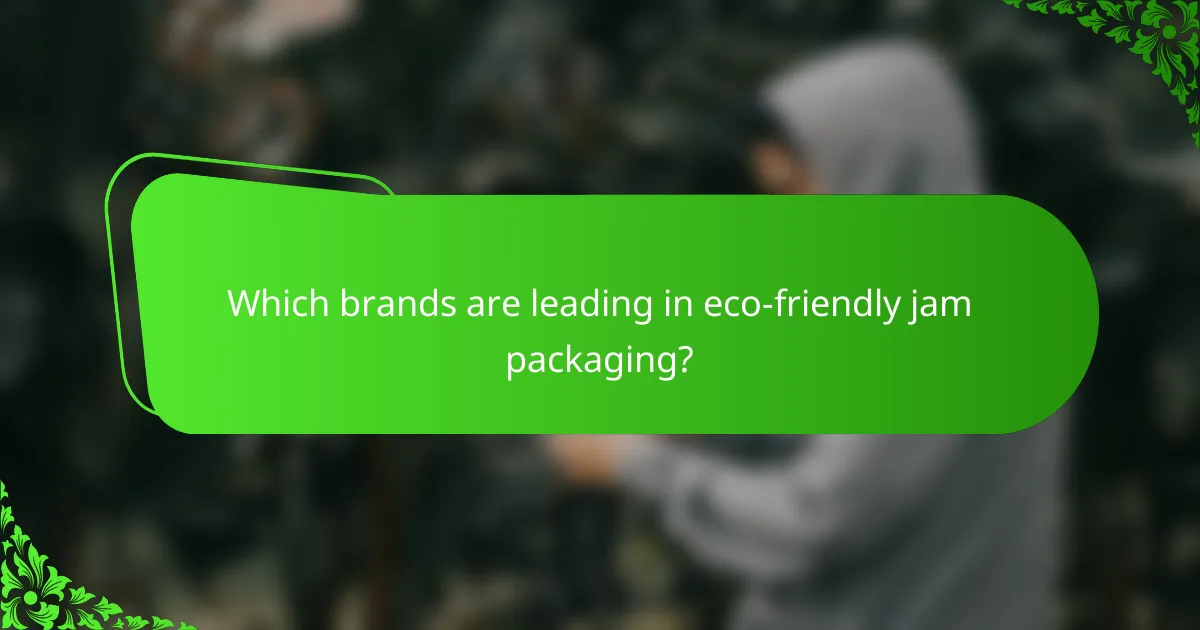
Which brands are leading in eco-friendly jam packaging?
Several brands are recognized for their commitment to eco-friendly jam packaging, focusing on sustainable materials and practices. Bonne Maman, St. Dalfour, and Smucker’s are notable examples, each employing different strategies to minimize their environmental impact.
Bonne Maman
Bonne Maman is known for its use of glass jars, which are recyclable and reusable, reducing plastic waste. Their packaging often features simple, rustic designs that emphasize natural ingredients, appealing to environmentally conscious consumers.
The brand also prioritizes sourcing ingredients from sustainable farms, which aligns with their eco-friendly packaging approach. This commitment helps ensure that their products are not only good for the environment but also support local agriculture.
St. Dalfour
St. Dalfour utilizes glass jars similar to Bonne Maman, promoting a zero-waste philosophy. Their packaging is designed to be reused, encouraging customers to repurpose jars for storage or crafts, further extending the lifecycle of their products.
Additionally, St. Dalfour focuses on organic ingredients, which often come from sustainable farming practices. This holistic approach enhances their eco-friendly image and appeals to health-conscious consumers.
Smucker’s
Smucker’s has made strides in reducing plastic use by introducing recyclable materials in their packaging. They have committed to sustainability goals, aiming for significant reductions in their carbon footprint and waste by implementing eco-friendly practices across their supply chain.
The company also engages in community initiatives that promote environmental stewardship, such as tree planting and educational programs. These efforts not only enhance their brand reputation but also contribute to broader environmental goals.
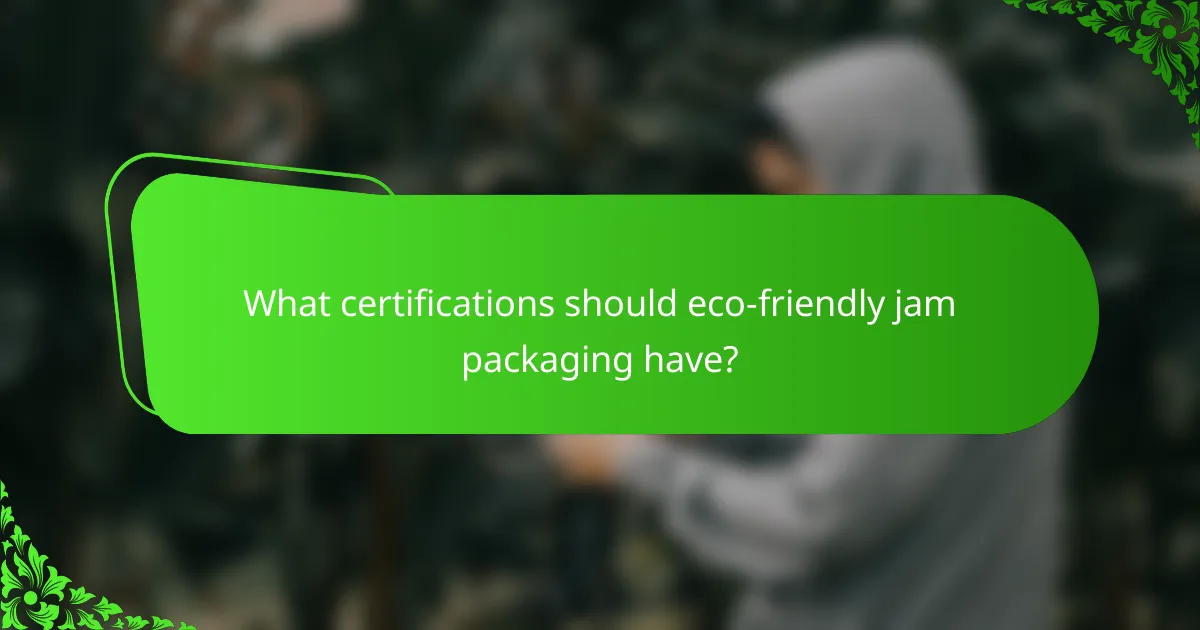
What certifications should eco-friendly jam packaging have?
Eco-friendly jam packaging should ideally have certifications that verify its sustainability and environmental impact. Key certifications include FSC, Cradle to Cradle, and USDA Organic, each indicating different aspects of eco-friendliness and responsible sourcing.
FSC certification
The Forest Stewardship Council (FSC) certification ensures that the materials used in packaging come from responsibly managed forests. This means that the harvesting of timber for packaging does not contribute to deforestation and supports environmental sustainability.
When looking for FSC-certified packaging, check for the FSC logo on the product. This certification helps consumers make informed choices that promote sustainable forestry practices and biodiversity conservation.
Cradle to Cradle certification
Cradle to Cradle certification assesses products based on their lifecycle, focusing on material health, recyclability, and renewable energy use. This certification encourages manufacturers to create packaging that can be fully recycled or safely composted, minimizing waste.
Choosing Cradle to Cradle certified packaging means supporting products designed with sustainability in mind. Look for this certification to ensure that the packaging contributes positively to the environment throughout its lifecycle.
USDA Organic certification
The USDA Organic certification indicates that the packaging materials meet strict standards for organic farming and processing. This certification is particularly relevant for jam packaging, as it ensures that the materials are free from synthetic pesticides and fertilizers.
When selecting USDA Organic certified jam packaging, consumers can be confident that the product aligns with organic farming principles, promoting healthier ecosystems and reducing chemical exposure.










